Some prominent islands here are Nalabana, Kalijai, Honeymoon, Breakfast, Birds, etc. Nalabana Island (meaning ‘weed-covered island’ in Oriya), in the centre of the lake, gets inundated in monsoon and when the lake levels reduce in summer, the island is exposed and birds flock here in thousands to feed. Those who intend to visit should remember to obtain an entry permit before entering the bird sanctuary.
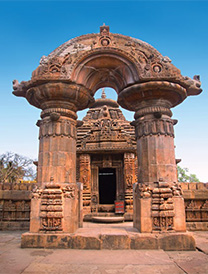
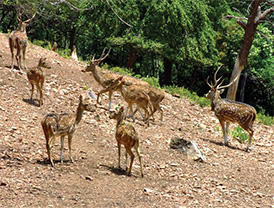
Kalijai temple: It is located on an island in the lake and it is said that fishermen take the blessings of the goddess before venturing on fishing expeditions in the lake.
Birds Island: Many of the huge boulders on the island seem white as they are largely covered with bird droppings.
Irrawaddy Dolphins: The flagship species of the second largest lagoon in the world, it is the main attraction and the lake is supposedly home to the only known population of Irrawaddy dolphins in India and one of only two lagoons in the world that are home to this species. Apart from tourist associations, the tourism department organises ‘dolphin-watch’ for tourists and it is said that about 40,000 tourists visit every year for dolphin watching. The lake is one of the best bird-watching spots in India and is also popular for angling. Within the lake precincts, Odisha Tourism Development Corporation (OTDC) and private operators offer boat cruises and boats on hire to visit the various islands in the lake.
Other nearby local attractions are: Puri: After pilgrims pay homage at the 11th Century temple of Lord Jagannath of Puri, they head for the vast stretches of golden and white sand beaches of Puri, where one could witness the mesmerising sunrise and sunset.
Nirmaljhara waterfall: An ideal picnic spot, the waterfall is about 12 km from the lagoon.
Mukteshvara temple
Though smaller than other temples in Bhubaneshwar the 10th Century Hindu temple, dedicated to Lord Shiva, is considered to be a gem of Kalinga architecture. The temple derives its name from ‘Mukteshvara’ which means ‘Lord of Freedom’. One of the prominent tourist attractions of the city, the red sandstone temple has elaborate carvings on it. A dip in the temple’s tank on the night before Ashokashtami car festival is believed to cure infertility in women. Also the tourism department organises a three-day annual dance function called ‘Muktesvar dance festival’ in the temple premises, which celebrates Odissi, the classical dance form of Odisha. Look out for the ornate arched gateway (or Toran) with exquisite carvings on its thick pillars.
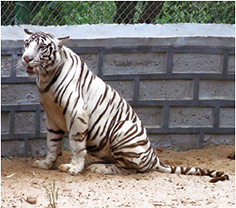 Taptapani
Taptapani
About 60 km away from Berhampur, the nearest railway station and set amid thick evergreen forests, the hot sulphur water spring derives its name from ‘Tapta’ (meaning hot) and ‘pani’ (meaning water) and is said to have medicinal properties.
Another attraction here apart from the picturesque landscape and serenity, is the deer park maintained by the local forest department.
Apart from these destinations, others that ought to find mention are:
Balukhand-Konark wildlife
sanctuary: The USP of this place could well be the fact that it plays host to a huge herd of blackbuck, which are usually found in dry arid areas.
Nandankanan zoo: It is known to host a huge variety of mammals (especially white tigers), birds and reptiles.
Conclusion
Odisha is a perfect getaway for the religious-minded, adventure lovers, lovers of architecture, connoisseurs of dance forms, shutter-bugs and nature lovers. So come gather memories for a lifetime. |SP
 Dhauli
Dhauli
Dhauligiri, a hillside with another name as Dhauli located on the river Daya banks, is about 8 km from Bhubaneshwar. Here one can see splendid edicts of Emperor Ashoka embossed on a rock in Dhauli, on the way to the hill summit. The marvellous Peace Pagoda (Shanti Stupa) is also located here. It is believed that the hill was the site of the Kalinga war. After the bloodbath of the Kalinga war, seeing the water of river Daya turn red, Ashoka realised the stark reality of battle and became a propagator of peace. Later with his help, Dhauli became a major Buddhist centre and he built several chaityas, stupas and pillars here. Tourists to this place should not miss the spectacular light and sound show in Dhaulagiri.
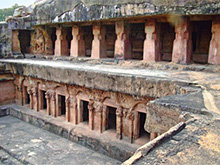 Udayagiri
Udayagiri
Composed of major stupas and monasteries, Udayagiri is the largest Buddhist complex in Odisha and along with the nearby Lalitgiri and Ratnagiri complexes is part of Puspagiri University. This Buddhist complex, which is believed to have been active between the 7th and 12th Centuries, is 90 km from Bhubaneshwar and 70 km from Cuttack in Jajpur district.
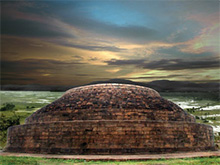 Lalitgiri
Lalitgiri
The major Buddhist complex is 90 km from Bhubaneshwar. Udayagiri is 8 km from Lalitgiri and Ratnagiri is a further 5 km away. From investigations it has been inferred that Lalitgiri had a constant presence of Buddhism from 3rd Century BC to 10th Century AD. Also the remnants of four monasteries were found.
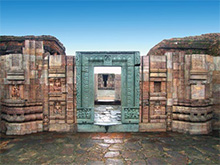 Ratnagiri
Ratnagiri
Ratnagiri was once the site of a Mahavihara, or major Buddhist monastery, in the Birupa river valley in Jajpur district and it is about 80 km from Bhubaneshwar. The monastery atop a flat hill-top offers a panoramic view of the surrounding areas.

